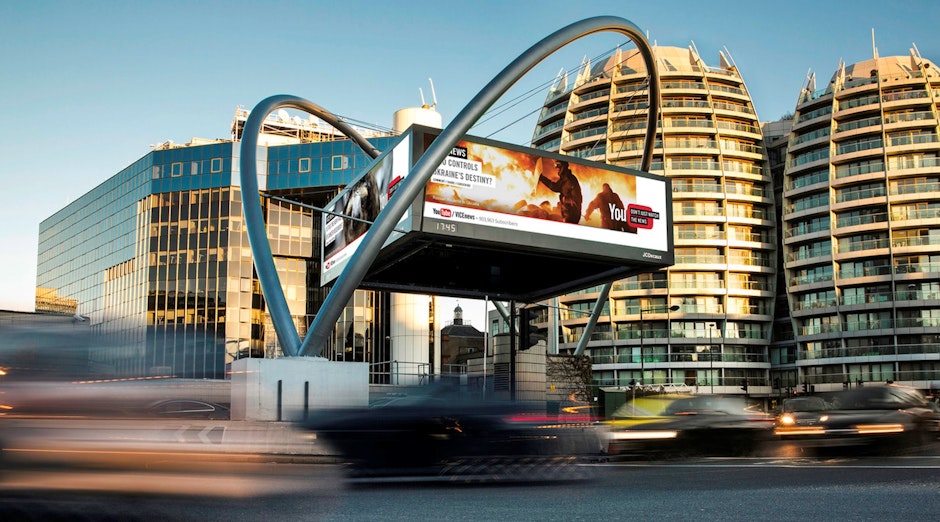Programmatic DOOH: Top 3 trends from 2022
Helen Miall is the chief marketing officer at VIOOH - the leading premium global digital out of home supply side platform

With over 20 years of experience in marketing and several roles at ad tech companies, Miall is a respected figure within the advertising industry. Here she shares some of the key findings from VIOOH’s annual State of the Nation reports, which provide a unique insight into the programmatic digital out-of-home (DOOH) industry by combining in-depth interviews with key industry spokespeople, alongside survey data from senior agency and advertising executives.
Chameleons are one of nature’s great survivors and adapters. Their ability to change according to their environment, temperature and other conditions (even changing colors to convey social signals to other chameleons), has helped ensure their existence for thousands of years.
So it seemed fitting for VIOOH to adopt the chameleon as this year’s theme for our annual State of the Nation reports, which have just been released, based on surveys taken by 1,000 media agency and brand advertisers, and interviews with key industry spokespeople across the UK, US, Australia, France, and Germany.
Being VIOOH, we of course had to mix things up a little, hence the addition of a plug at the base of the chameleon’s tail, to supercharge the chameleon’s ability to change. This was chosen because this year’s reports, which looked into the industry’s current and future views on programmatic DOOH, highlighted more than ever that the pace of change in DOOH is accelerating.
Here are three of our key findings.
Increasing investment in programmatic DOOH
As shown in one of the key findings, global demand for programmatic DOOH continues to grow, with over nine out of 10 (94%) of media professionals surveyed stating they will retain or increase investment in the channel over the next 18 months - with almost 20% set to double their investment. Programmatic is also adding incremental budgets to DOOH, with the sum of budgets from digital, other traditional media, and net new budgets outweighing those converting from traditional “paper” OOH.
Alongside budget considerations, the trend globally is for the planning and buying of programmatic DOOH to move towards programmatic teams - either dedicated programmatic DOOH teams (+4% points globally vs 2021) or within digital programmatic teams (+5% points globally vs 2021) - showing increasing alignment with other digital channels.
Programmatic enables DOOH to fit within omni-channel campaigns
For both brand and performance-driven campaigns, social media and digital video are typically the channels most frequently used alongside programmatic DOOH, where its broadcast nature aligns well to prime and amplify the campaign within one-to-one channels. Here, programmatic is the key that enables DOOH to easily fit within omnichannel campaigns, as it broadens the opportunities and relevance at both upper and lower funnel activation.
Programmatic has enabled DOOH to easily become part of an integrated, omnichannel approach that provides advertisers the opportunity to target the same audience across multiple touchpoints, allowing them to reinforce campaign messaging and build awareness and activation.
In the same way, a single view of a campaign enables advertisers to manage the media mix, as they are able to monitor campaign exposure and subsequent activity, optimizing across different channels as needed.
Moreover, programmatic is generally considered to have broadened DOOH’s appeal as a hybrid medium, combining the brand-safe, mass-reach of broadcast - conducive to branding and upper funnel activities - with the strength of data-driven impressions and lower funnel conversions, driving footfall, in-store purchases and offline-to-online activation.
Advertisers’ needs are evolving as markets mature
eMarketer predicts that in the US, seen as the most mature market for programmatic DOOH globally, 20% of all DOOH will be transacted programmatically in 2023, rising to 25% in 2024.
All five markets surveyed in both 2021 and 2022 are evolving, with increasingly sophisticated needs in terms of data and cross-channel measurement. In 2021, advertisers’ top requests globally were for a clearer understanding of how programmatic DOOH fits within an omni-channel campaign and for standards in programmatic DOOH to be clearly articulated. However, in 2022, these dropped to seventh and ninth position respectively, with the ability to measure programmatic DOOH efficiency on its own (ranked second) and together with other channels (ranked third) becoming a clear need, alongside best practices in using data (ranked first).
With increasing maturity in the market, advertisers seem to be less concerned with foundational considerations and instead are moving on to refining programmatic DOOH campaigns, as they seek improvements in audience data, both in terms of volume and types of data - particularly shopping behavior and socio-demographic - and real-time data used in targeting audiences.
In conclusion, it’s clear that for OOH media owners, being part of a diversified media ecosystem with the ability for DOOH to easily form part of an omni-channel campaign, is critical in order to benefit from incremental budgets - and programmatic enables this. Growth is further unlocked through improvements in audience data and precision targeting, both also enabled by programmatic, confirming that programmatic is the “plug” that enables DOOH to not only adapt and survive but to further thrive as a part of the future of OOH and digital media.
You can download this year’s reports here and watch our UK SOTN breakfast panel discussion here.

